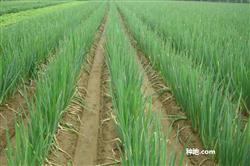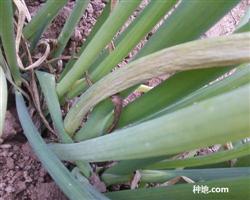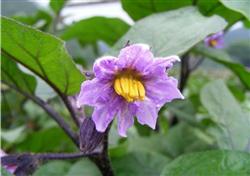What are the diseases and insect pests of green onions?

What are the diseases and insect pests of green onions? If you want to introduce how to prevent and control the diseases and insect pests of green onions, please introduce that the prevention and control of diseases and insect pests should be based on the prevention and control of green onions for 2-3 years; clean the countryside to eliminate the sources of diseases and insect pests; select disease-resistant varieties; carry out seed disinfection, that is, soak the seeds in 50 ℃ warm water for 25 minutes before sowing, then soak them in cold water, fish out and dry, sow seeds, apply sufficient basic fertilizer, strengthen field management, and cultivate healthy scallions to enhance disease resistance. First, downy mildew. It mainly harms leaves and pedicels. Primary yellow-white or milky yellow, spindle-shaped or oval infection spots on the pedicel, which produce white mold, and then become yellowish or dark purple. The middle and lower leaves were infected, and the leaves above the diseased parts gradually withered and sagged. The pseudostem is often broken and bent when infected with disease. Bulb infection can cause dwarf leaf deformity or distortion of diseased plants. When the humidity is high, a large amount of white mold grows on the surface. Prevention and treatment methods: at the initial stage of the disease, spray 75% chlorothalonil wettable powder 600x liquid, or 50% nail cream copper wettable powder liquid 1000 times, or 64% poisonous alum wettable powder 500x liquid, spray once every 7-10 days for 2-3 times. Second, rust. It mainly harms leaves, pedicels and green stems. At the initial stage of the disease, oval slightly raised orange blister spots were produced on the epidermis, and then the epidermis ruptured and turned outward, spreading orange powder. Prevention and treatment methods: at the initial stage of the disease, spray 15% triadimefon wettable powder 2000-2500 times, or 50% verapamil EC 700800 times, or 70% mancozeb 1000 times plus 15% triadimefon 2000 times, once every 10 days, continuous prevention and treatment for 2-3 times. Sclerotinia sclerotiorum. Damage to leaves, pedicels, most of the disease near the surface. The hyphae expanded from the outer to the inner leaf sheath, and in severe cases, the whole plant was inverted, and the base rotted and died. The diseased part produces white flocculent hyphae and black short rod-shaped or granular nuclei. Prevention and treatment: at the initial stage of the disease, 50% carbendazim wettable powder, or 50% methyl topiramate, or 40% sclerotiorum 1000-1500 times were sprayed at the base of the plant, once every 7-10 days, for 2-3 times. Fourth, Liriomyza sinensis. The larvae zigzag through the leaves all their lives, latent feeding on the mesophyll, and the leaves can see tortuous tunnels. The mesophyll was killed, leaving only the upper and lower layers of white transparent epidermis, and the leaves withered in severe cases. Control methods: during the peak period of adult occurrence, spray Wanling, or 1000-1500 times of methomyl EC plus 1000 times of cypermethrin. Spray once every 5-7 days, a total of 2-3 times. It can also treat pests such as spring onion and thrips. Click to get more green onion planting techniques click to get more vegetable planting techniques
- Prev

How to sow green onions?
What are the diseases of green onions? How to treat it? Please instruct scallions to have the following diseases: choose 90% aluminum triethyl phosphate wettable powder 400 times 500 times liquid, 75% chlorothalonil wettable powder 600 times liquid, 64% poison alum wettable powder 500 times liquid, spray once every 7 times 10 days, spray 2 times 3 times in a row. ...
- Next

What is the reason for eggplant falling flowers and fruits?
What is the reason for eggplant falling flowers and fruits? How to prevent and cure? In eggplant production, usually the flower and fruit drop is serious, which restricts the increase of yield and is not conducive to the improvement of production efficiency. The main reasons for eggplant falling flowers and fruits are: 1. The temperature is not suitable for eggplant fruiting period requires a higher temperature.
Related
- Where is it suitable to grow horseradish in China? it is expected to see the middle altitude horseradish in Alishan.
- How to prevent tomato virus disease reasonably? (Control methods included)
- Many people like to plant towel gourd on the balcony. What are the main points of this method and management?
- What crops can chili peppers be mixed with?
- Fertilization techniques and matters needing attention in Tomato
- What are the grafting techniques for peach seedlings in spring?
- Harm and control methods of root swelling disease of Chinese cabbage
- What are the pests of sweet potatoes? How to prevent and cure it?
- Symptoms, causes and Control methods of navel Rot in Tomato
- The cause of "Cucumber rotten bibcock" in Farmers' planting Cucumber and its Control Plan

